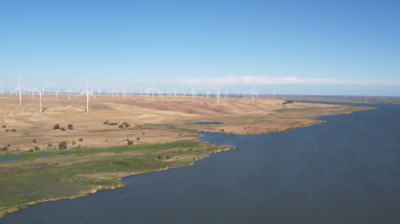Bay Area Council Poll: Newsom Holds Strong Lead in Governor’s Race
Lt. Governor Gavin Newsom holds a firm lead among Bay Area voters in the June primary to become California’s next Governor, according to the 2018 Bay Area Council Poll, with two Republicans locked in a tie to advance to the November general election.
More than a third of Bay Area voters are still undecided about their choice for California’s next governor, according to the 2018 Bay Area Council Poll. With absentee ballots starting to arrive in mailboxes, 36 percent of Bay Area voters say they don’t know who among seven candidates should replace Gov. Jerry Brown in Sacramento. There’s a little more certainty among just those voters who are most likely to cast ballots in June—based on their past voting history—with 26 percent saying they are undecided.
Voters who have made up their mind overwhelmingly pick Lt. Gov. Gavin Newsom, with 31 percent of voters putting the former San Francisco mayor at the top of their ballots. The next highest finishers might be a surprise in the deep blue Bay Area. Republicans Travis Allen and John Cox each tallied 7 percent, followed by Democrats Delaine Eastin at 5 percent, Antonio Villaraigosa and John Chiang at 4 percent each and last-minute Democratic entry Amanda Renteria at 2 percent. 5 percent chose ‘someone else’.
Among likely June voters, Newsom’s support increases to 39 percent, with Allen and Cox each capturing 9 percent, Chiang getting 5 percent, Eastin and Villaraigosa each logging 4 percent and Renteria gathering less than 1 percent.
The results come as the election enters a critical stage as absentee ballots have been mailed and the candidates are pushing to get their message out to voters.
“It’s not over until it’s over, and Bay Area voters, while definitely showing strong support for Lt. Governor Newsom, still harbor a lot of uncertainty about this race,” said Jim Wunderman, President and CEO of the Bay Area Council.
See the poll results for the Governor’s race>>
Women and younger voters are the most undecided. The Bay Area Council Poll found 43 percent of women don’t know who will get their vote, while 28 percent of men aren’t sure who to pick. For those that have decided, Newsom again is the clear favorite with 34 percent of men and 28 percent of women casting their ballot for him. Among men that have decided, 10 percent say they’ll vote for Cox and 9 percent for Allen. Next in line for women, however, is Eastin with 8 percent saying they’ll vote for the former state Superintendent of Public Instruction.
Young women, in particular, are unsure about who to cast their vote for. The poll found 50 percent of Bay Area women aged 18-49 are undecided on who should lead California, with just 22 percent saying they back Newsom for the job. Women aged 50-64 back Newsom by 30 percent while women 65 years and older back the Lt. Governor by 42 percent.
Clear generational differences, regardless of gender, also emerged in the results, with older voters showing greater support for Newsom. The poll found that 44 percent of voters aged 18-49 remain undecided, with 26 percent backing Newsom. Second place is a statistical toss up among this age group, with none of the other candidates getting more than 7 percent of votes. Among voters aged 50-64, 33 percent put Newsom at the top of their ballot and among those 65 and older Newsom grabs 38 percent.
Silicon Valley voters registered the lowest level of support at 22 percent for Newsom among the Bay Area’s different subregions. The Bay Area Council Poll found 39 percent support Newsom in the town where he served as mayor and 40 percent support him in the North Bay where Newsom resides. The only other candidate to break double digit support in any county was Travis Allen, getting the nod from 12 percent of Contra Costa County voters.
The 2018 Bay Area Council Poll, which was conducted online by Oakland-based public opinion research firm EMC Research from March 20 through April 3, surveyed 1,000 registered voters from around the nine-county Bay Area about a range of issues related to economic growth, housing and transportation, drought, education and workforce.





